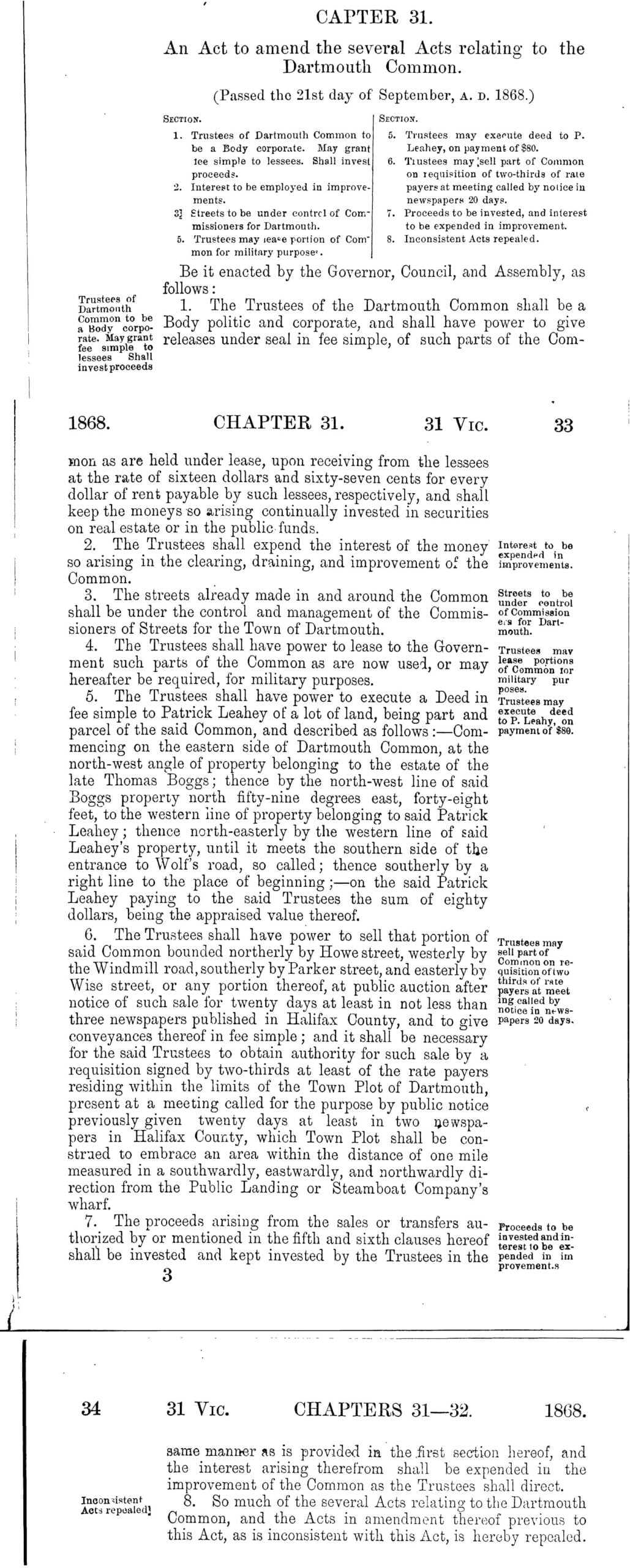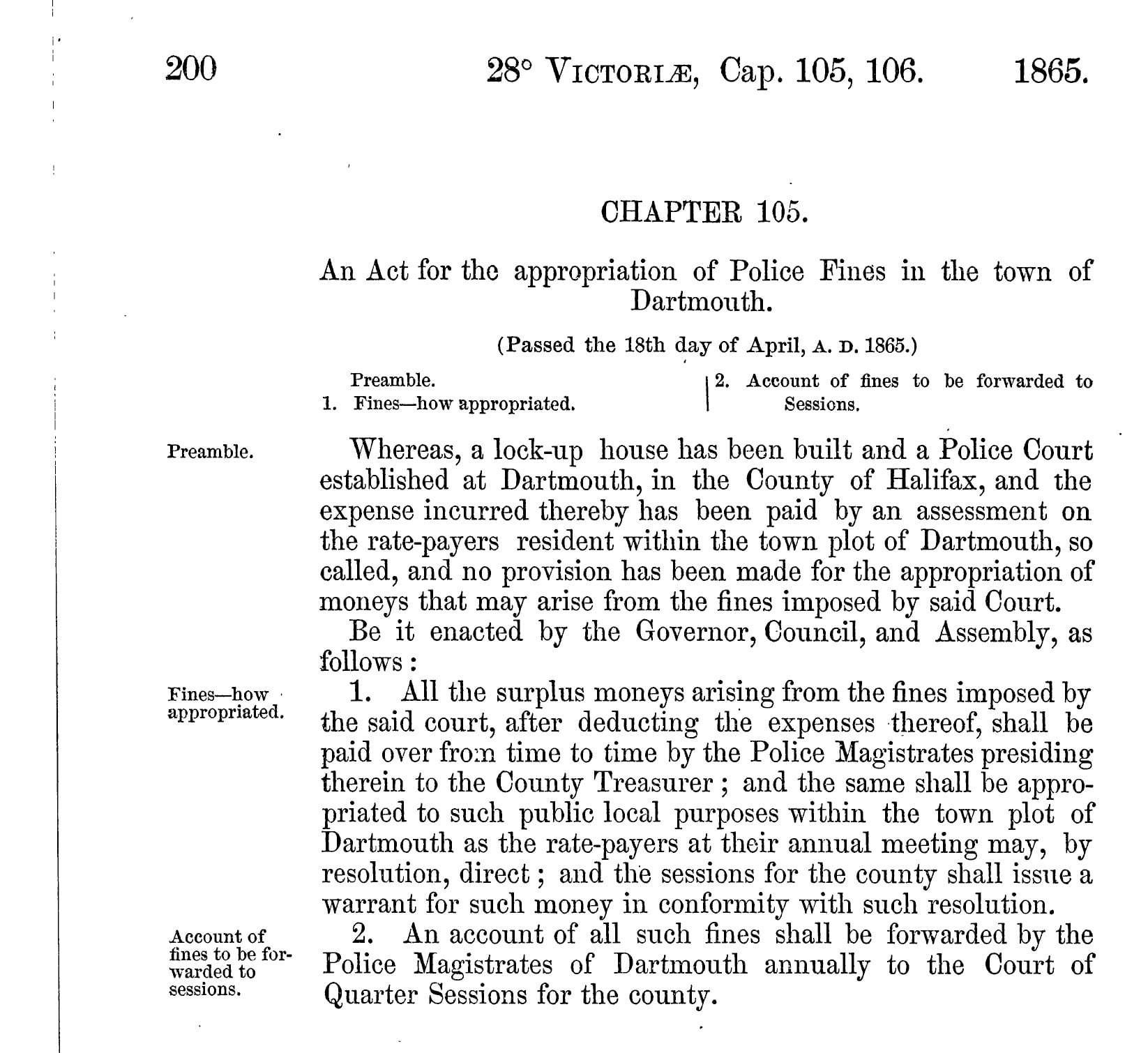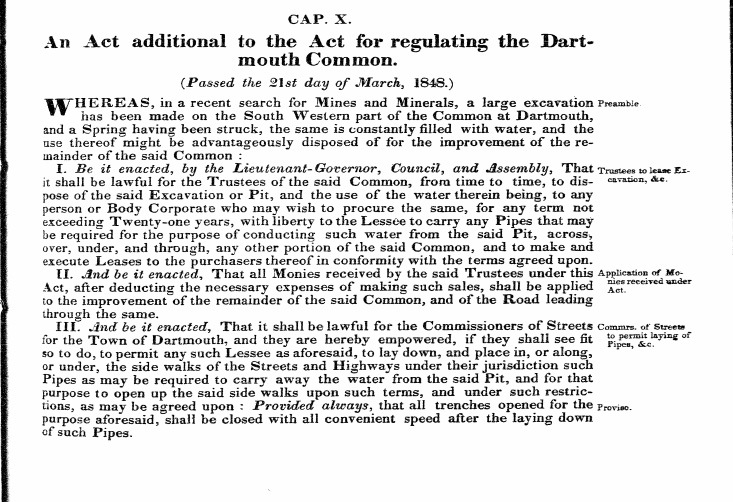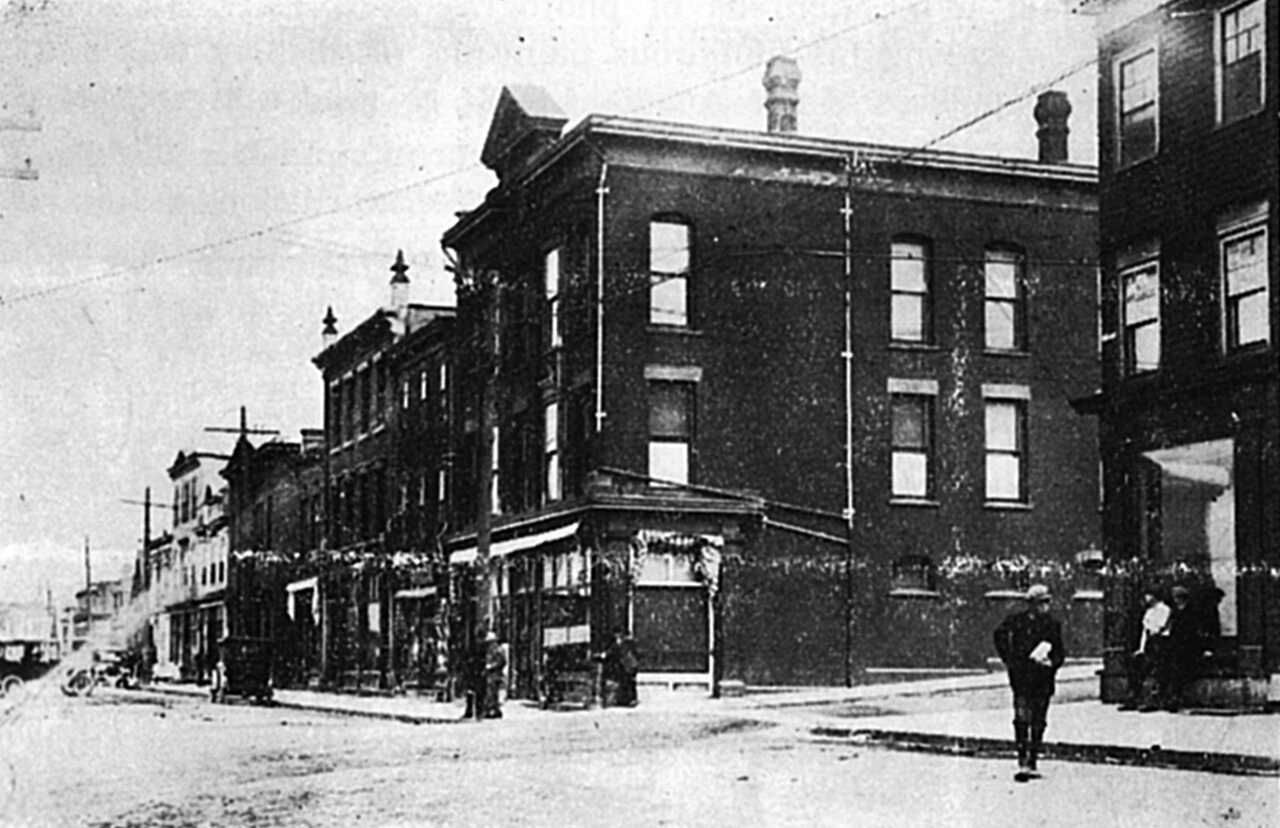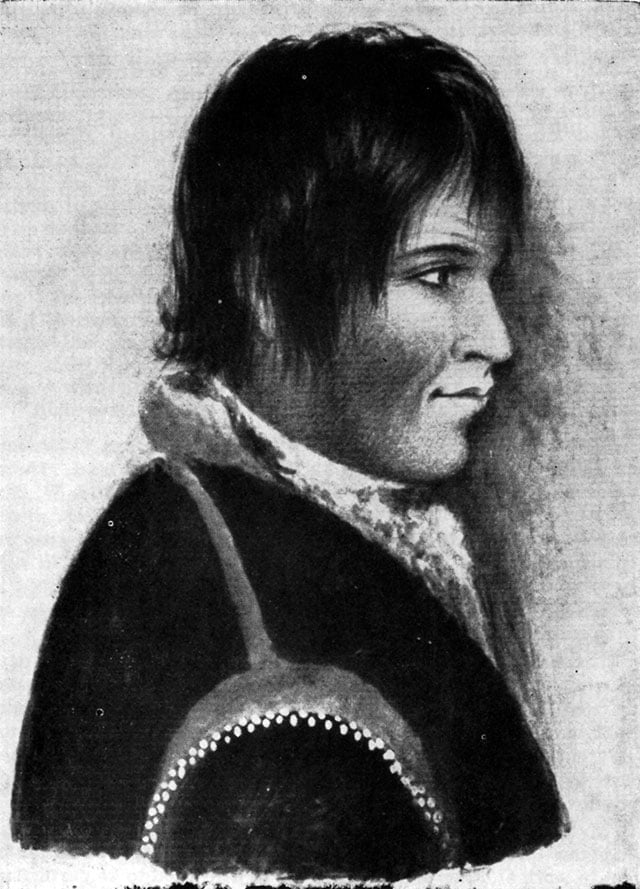From The Story of Dartmouth, by John P. Martin:
As the people of Nova Scotia had voted so overwhelmingly against Confederation at the polls, one of the first acts of the new House of Assembly in 1868 was to send a delegation to London praying for a repeal of the B.N.A. Act as far as it regarded this Province. Although Joseph Howe was a member of the House of Commons at Ottawa, he was nevertheless among the number selected. Dr. Charles Tupper, also a member of the Federal Parliament, likewise went to England to use his influence in favor of Confederation.
In his reminiscences written in later life, Sir Charles records that when the delegation of that time had failed in its mission, he discussed the situation with Joseph Howe in London, pointing out the great advantages the latter could obtain for his native Province by accepting the inevitable and supporting the Union. As a proof there was no enmity among the opposing factions, Dr. Tupper further relates that on the homeward bound steamer for Halifax in July, he had played the odd rubber of whist with Joseph Howe and with others of the party, including Mrs. Howe who had accompanied her husband from Dartmouth to London.
At Halifax there was only “mild cheering” when the Howe delegation disembarked on a Wednesday morning, and perhaps still less when Dr. Tupper and his supporters landed. Hon. S. L. Tilley, Federal Minister of Customs, who chanced to be in the City, came down the wharf later and took advantage of an opportunity to speak with Joseph Howe and to inquire after the welfare of Mrs. Howe, expressing a wish to call on her before he left Halifax. Thereupon Mr. Tilley was invited to breakfast with the Howe family at “Fairfield” in Dartmouth on Friday morning of that same week.
Mr. Tilley’s observations of public opinion around Halifax and Dartmouth, together with the substance of his Friday interview with Mr. Howe were reported next day to the Prime Minister at Ottawa, in a letter*, part of which stated:
Many of the people are worked up to a perfect frenzy and ready for the most extreme measures. These are backed up and encouraged by the annexation and the Fenian element, and there is a good deal of that scattered throughout Nova Scotia.
By the end of July, Sir John A. Macdonald was in Halifax. He came, with a few members of his Cabinet, ostensibly to hear the grievances of the Province from a Convention of Liberals then being assembled, but perhaps the real reason was to sound out the feelings of Joseph Howe. No doubt Tilley’s report encouraged him to do so.
Evidently the Prime Minister lost no time in sending a communication to Dartmouth. In those pre-telephone times the customary method was by special messenger who, on this occasion, most likely came posthaste across the harbor, and traveled towards “Fairfield” with a message that was historic in its significance:
Government House, Halifax, Saturday, August 1, 1868
My dear Mr. Howe,—I have come to Nova Scotia for the purpose of seeing what can be done in the present state of affairs, and should like of all things to have a quiet talk with you thereafter. I shall be ready to meet you at any time or place you may appoint. The General has kindly given me up his office here and if it would suit your convenience we might perhaps meet here after church tomorrow,
Believe me, Yours faithfully, JOHN A. MACDONALD
The reply is dated the same day, indicating that the messenger waited for Mr. Howe’s answer. The latter agreed to meet Sir John on Sunday at 1.30 p.m. (This was a far different attitude towards Howe than had been shown hitherto by Sir John at Ottawa.}
Political issues were not discussed during the meal that morning. This is learned from Mr. Tilley’s letter to the Prime Minister preserved among Confederation papers of Macdonald-Tilley at the Dominion Archives wherein he states that, “After Mrs. Howe and her sons had left the room we approached the main question.” The day was Friday, July 16th 1868, and the letter was dated at Windsor, N.S., July 17th. The visit of a Conservative Cabinet Minister to Fairfield is further proof that the place was associated with the formative period of the history of the Dominion of Canada. Students nowadays examining Howe’s letters at Ottawa, or in newspapers at the N.S. Archives, or in the volumes of “Letters and Speeches of Joseph Howe’’, must be puzzled as to the location of “Fairfield”, and probably imagine that it is the name of a town. There is no hint given the reader that it was Howe’s estate in a rural part of Dartmouth.
“In his Dartmouth booklet published in 1941, John W. Regan’s sketch of Fairfield noted that between there and Government House in 1868, “weighty proposals were carried back and forth on the Ferry— a Ferry Tale of vast importance”.
The year 1868 also saw the beginnings of another Dartmouth undertaking when William J. Stairs commenced the Ropeworks on former Albro land where he erected a brick factory, tarring house and a ‘long walk”—then the longest structure in the Province. This industry set development going in the north-end, and contributed to the prosperity of the town by continually increasing the amount of assessable property in their own buildings and in the dwellings of employees. New streets were laid out.
The Dartmouth Woolen Factory, situated west of the “Channel” at Lake Banook was also in operation by 1868 because their name is listed, among prize winners, for several varieties of tweed at an Exhibition in Halifax that autumn. Other local firms having displays included Albro’s Nail Factory, Eben Moseley, ships’ models, Nathaniel Russell, tinsmith, John P. Mott’s products and Starr Manufacturing Company’s artistic array of John Forbes’ new skates. Exhibits of birch bark canoes, paddles, beads, moccasins and chair bottoms won prizes for Mary Thomas, Peter Sack, James Paul and Peter Cope from the Mi’kmaq camps at Dartmouth.
The last named firm was incorporated in 1868 with a capital of $60,000. Shares were $1,000. John Starr was the first President.
On a December night in 1868 fire destroyed a vacant house at “Abbeville” belonging to Mrs. John H. Slayter. This house (was located on what would now be) part of Slayter Street.
